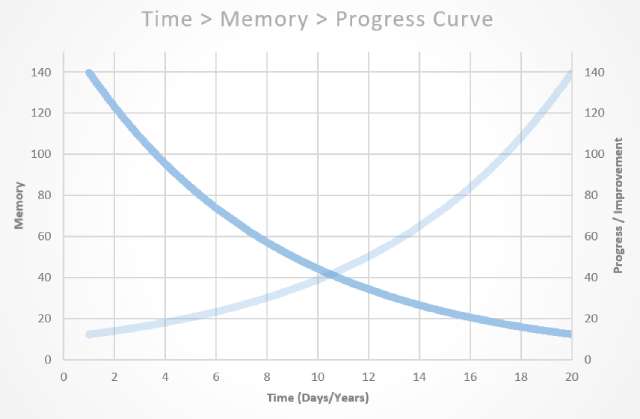Episode #03 - "Running"
“Running is alone time that lets my brain unspool the tangles that build up over days. I run, pound it out on the pavement, channel that energy into my legs, and when I’m done with my run, I’m done with it.”
— Rob Haneisen, runner
Date Published
03/06/2020
Main Topic
Running
Length
47 minutes
In this weeks episode, it’s all about running. We introduce the topic by discussing when and where we started on our running journey and some of the different races we have taken part in since.
We discuss the famous progress graph/curve from Marcus Aurelius, which maps out time and memory against progress. We also discuss the origins of the marathon race from ancient Greece as well as the more modern race, the Barkley Marathons – “the race that eats its young”.
Listen to our episode on ‘Running’ right here and we would love it if you shared this episode on your social media channel of choice. Enjoy!
Main Topic Of This Episode
For each episode, we will highlight the main topic discussed and share a video from YouTube we think is worth watching.
Where Dreams Go To Die is a documentary created by Ethan Newberry that follows Canadian ultrarunner, Gary Robbins, during his two attempts at completing The Barkley Marathons – a 100+ mile event many consider the toughest endurance run on Earth.
Spanning more than 2 years, this journey is emotional, powerful and truly inspirational. Find out what it takes to attempt the impossible and the demons that follow. Learn the sacrifices that come with dedicating one’s life to this endeavor.
Check Out Some Further Reading
Found something interesting discussed in this episode? Chances are, we found it interesting too and we went off and did a bunch of reading online about it.
So why not dive further into the topic! Here are some handy links we think you might like.
The Barkley Marathons is an ultramarathon trail race held in Frozen Head State Park near Wartburg, Tennessee. If runners complete 97 kms this is known as a “fun run.” The full course is 160 kms (distances are approximate). The race is limited to a 60-hour period, and takes place in late March or early April of each year.
For more information on the Barkley Marathons, check out the Runner’s World page on it.
The marathon is a long-distance race with an official distance of 42.195 kilometres (26 miles 385 yards), usually run as a road race. The event was instituted in commemoration of the fabled run of the Greek soldier Pheidippides, a messenger from the Battle of Marathon to Athens, who reported the victory.
history.com have a great article on the origins of the marathon race.
The 1908 Summer Olympics were held in 1908 in London, United Kingdom, from 27 April to 31 October 1908. These games were originally scheduled to be held in Rome, but relocation on financial grounds followed a disastrous eruption of Mount Vesuvius in 1906. The 1908 London Olympics were the first olympics to have the marathon race set at 26.2 miles.
Check out the official Olympics website for fascinating articles and reports on the 1908 Olympics.
The Connemara International Marathon, known as the Connemarathon, is a marathon in Connemara, County Galway, Ireland. Comprising a road half marathon, a full marathon and a 39.3 mile ultramarathon, it usually takes place in April each year.
Visit the official website of the Connemarathon for information on the event as well as the next race in 2021.
The curve in its modern and purest form is a very simple yet very intuitive curve to follow. As one tackles an activity, a hobby leading to a steep learning curve, the plot shows that at time ‘0’ the individuals memory of the process is at its maximal point (you can remember the steps). As time moves forward t=1,2,3,4… the memory of the initial steps taken and effort applied starts to decline. At this same time, progress or improvement with time is not wholly noticeable until an inflection point is reached. As seen in the curve, the inflection point where progress/improvement starts to exponentially climb, is also the point where the individuals memory of these initial activities or learning/training has been exponentially declining and beginning to bottom out. Over time (t=20) this memory will be a distant one and the original training and learning steps will be all but forgotten. However, this is where the curve shows it’s insightful truth, in that at t=20 and beyond, progress and improvement is now maximal and optimised and the individual is at or approaching mastery of that thing.
This curve intuitively represents how gradual, iterative and focussed effort in learning a skill will give rise to mastery, as long as the person can see beyond the perceived lack of progress at the early stages of learning and hold in their mind that continual and iterative work will give rise to exponential benefits and mastery if allowed to do so.

Check Out Other Episodes
Enjoyed this episode? Hopefully you found some of the additional information on this page interesting or useful. Why not check out one of our other episodes – we think you will like them too! 🙂
